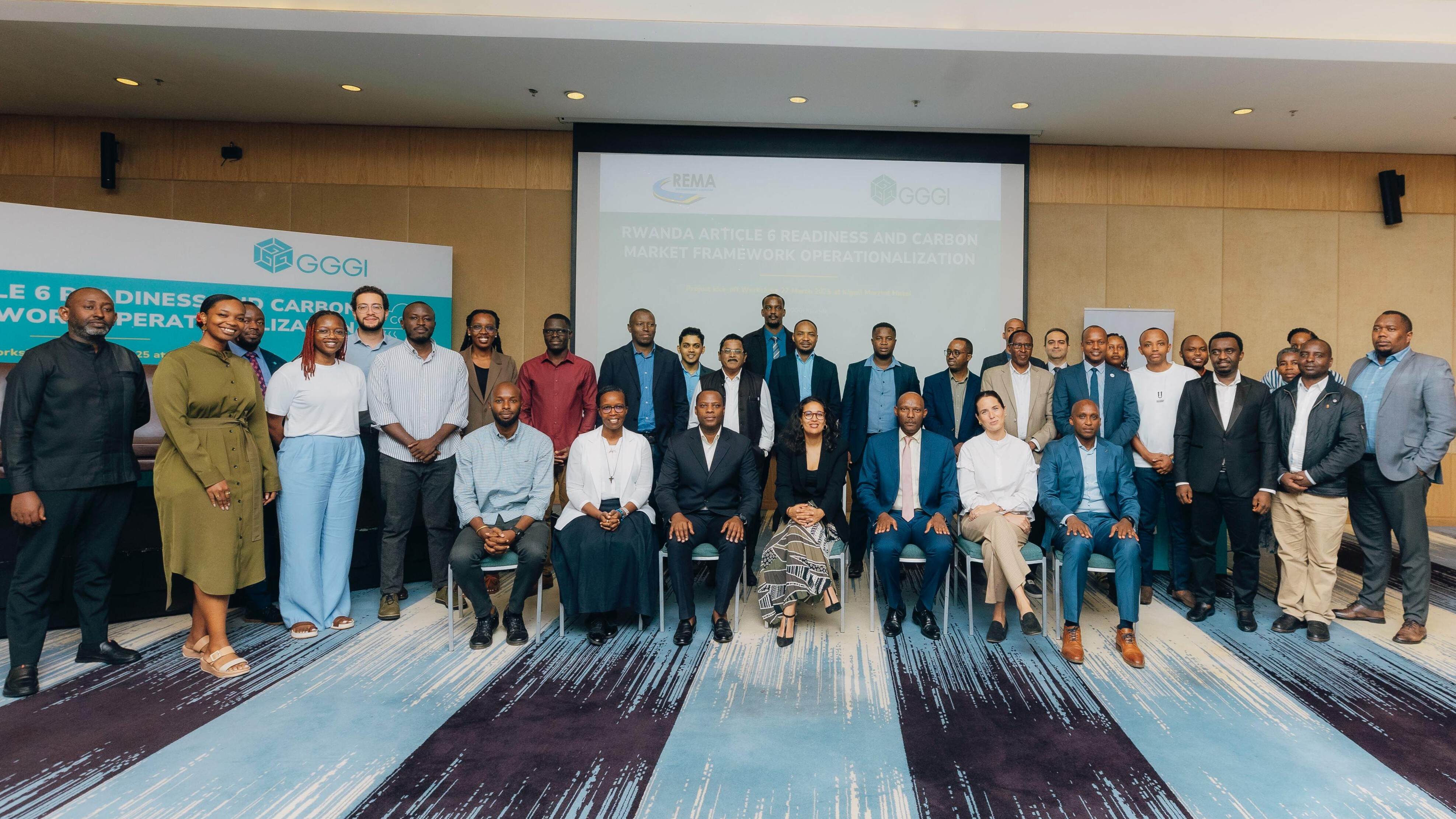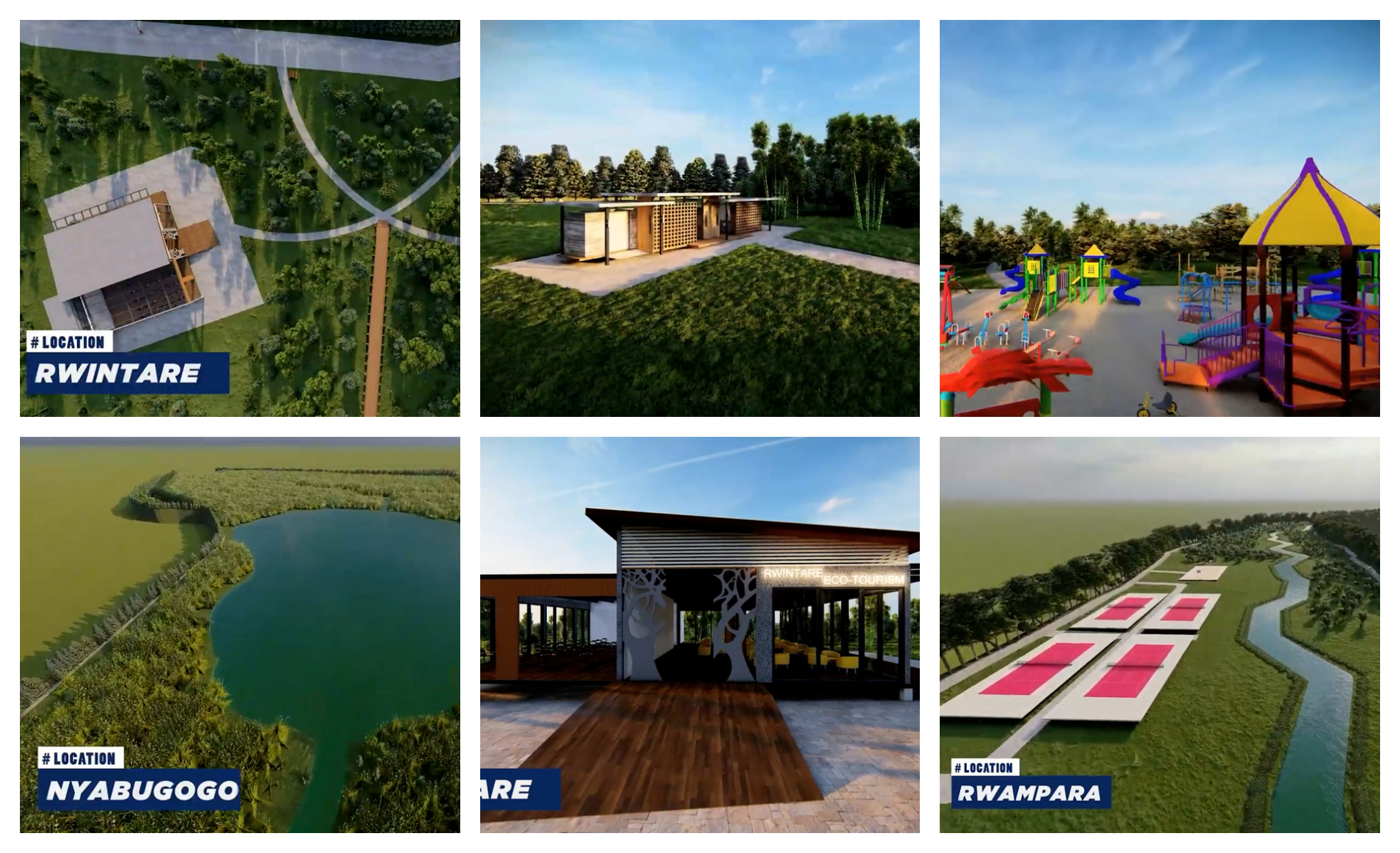Kigali Wetlands 2025: Engineering Solutions for Flood Control, Biodiversity & Clean Water
Kigali is investing millions
to restore five wetlands. Learn how engineering is tackling runoff, climate
resilience, and boosting eco-tourism.
The total
investment is estimated at 82 million US dollars, which is about 108 billion
Rwandan francs. Funding comes from both government resources and development
partners. Already, about 30 million US dollars, or 40 billion francs, has been
invested in the first phase of conservation works and infrastructure. The
project is currently at 67.3 percent completion, and full rehabilitation is
expected by December this year, followed by a four-month testing phase to March
2026.
1. Kigali’s
Five Wetlands Under Rehabilitation
Gikondo
Wetland is about 70
percent complete. It will include four ponds, flood control rivers and dams,
and will host culture tourism and recreation. Special botanical species will be
planted to restore vegetation.
Rwampara
Wetland is at 38
percent. It will be known for national culture and fashion, creating a link
between environmental conservation and Rwanda’s cultural heritage.
Rugenge-Rwintare
Wetland is about 62
percent complete. It will include a five-hectare pond to collect water from
Rugenge, Rwintare and Gikondo. A Knowledge Hub will be built to share Rwanda’s
journey in wetland rehabilitation and environmental conservation.
Kibumba
Wetland is at 76
percent. It will be designed as a fishing wetland, including a botanical garden
and plots for education.
Nyabugogo
Wetland is about 59
percent complete. It will feature a large pond and will serve as a research and
study wetland because of its diversity of plants.
Each wetland has a unique identity, but they share common features. All will have ponds and streams to manage runoff, sediment labs to filter wastewater, and solar lighting along the walkways. Together, they will provide 61.5 kilometres of walkways for recreation and mobility.
2. Investment
and Financing
The
rehabilitation of Kigali’s wetlands is a large-scale investment in the city’s
future. The total cost is estimated at 82 million US dollars, equivalent to
about 108 billion francs.
So far, 30
million US dollars, or 40 billion francs, has been used. This funding has gone
to conservation works, initial infrastructure, and the first phase of
construction. The second phase will focus on building sports and recreation
facilities, tourism centres, and knowledge hubs.
The
investment is not only financial but also strategic. Wetlands provide ecosystem
services such as flood control, clean water, biodiversity protection and
climate regulation. By investing in wetlands, Kigali is saving money that would
otherwise be lost to flood damage, health problems and environmental
degradation.
3. Expected
Benefits and Income
The economic
and social benefits of wetland rehabilitation are significant.
So far,
about 6,000 green jobs have been created. By completion, the project is
expected to generate 12,000 jobs. These include jobs in construction,
environmental management, tourism, research and recreation.
The wetlands
will also contribute to Kigali’s revenue. Recreational sites, cultural centres
and tourism facilities will generate income similar to what is being achieved
by Nyandungu EcoPark.
The value of ecosystem services is even higher. Wetlands naturally clean water, reduce flood risks and support biodiversity. A study by Rwanda Environment Management Authority shows that the value of Kigali’s wetlands can reach more than 2 billion US dollars over 30 years if well rehabilitated. This value comes from avoided damages, increased tourism, and improved health.
4. Timeline and
Progress
Rehabilitation
works began in 2024. Progress varies by wetland, but overall, the project is
67.3 percent complete. The plan is to finish major works by December 2025. A
four-month testing phase will then run until March 2026. This phase will check
whether planned designs and engineering solutions match what has been built.
5. Engineering
Solutions for Ecosystem Restoration
The Kigali
wetlands project is an example of how engineering can work with nature. Several
technical solutions are being applied.
Retention ponds and dams are being constructed to collect and control stormwater. These ponds reduce flood peaks during heavy rains and store water for slow release.
Sediment
labs are being built at the entry points of wastewater into the wetlands. These
labs trap stones, plastics, dead plants and other waste, ensuring that water
entering the wetlands is clean.
Infrastructure
is designed for people as well as nature. More than 61 kilometres of walkwaysare being constructed, powered by solar energy. These walkways provide
mobility, recreation and tourism opportunities.
6. Tackling
Climate and Runoff Challenges
Kigali faces
challenges from climate change, including intense rainfall and flooding.
Wetland rehabilitation provides solutions to these problems.
Wetlands act as natural sponges, absorbing runoff and reducing flood risks. By storing water during heavy rains, they protect urban areas from flooding. They also release water slowly during dry periods, supporting water availability.
Rehabilitated
wetlands will also reduce urban heat, store carbon, and protect biodiversity.
They are a cost-effective way of improving Kigali’s climate resilience while
enhancing the city’s green image.
7. From
Degradation to Restoration
The current
situation in many wetlands is severe. Encroachment, pollution and degradation
have reduced their ability to function. Floods have increased, water quality
has declined, and biodiversity has been lost.
Kigali is
facing rapid urbanization, population growth, and the pressures of climate
change. As the city expands, the need for stronger systems to manage water,
protect biodiversity, and create green jobs has become urgent. Wetlands, which
once acted as natural buffers against floods and pollution, had been heavily
degraded. Encroachment, waste dumping, and unplanned development turned them
into vulnerable zones. The government recognised that without action, Kigali
risked more flooding, poorer water quality, and the loss of valuable ecosystem
services.
The proposed
rehabilitation outcomes are clear. Once complete, the wetlands will filter
water, reduce floods, support biodiversity, and provide spaces for recreation
and tourism. They will change from degraded spaces into productive, clean and
attractive urban ecosystems.
Case Study:
Nyandungu EcoPark
The
Nyandungu EcoPark is an important example of what wetland rehabilitation can
achieve.
The project cost about 6 billion francs and took six years to complete. It transformed a degraded wetland into an eco-tourism park covering 121 hectares.
Nyandungu
now attracts about 6,000 visitors every month. It generates jobs, revenue and
education opportunities. Engineering works included the creation of ponds,
streams, botanical gardens and walkways.
The benefits
are visible. Nyandungu filters water, reduces flood risks, and supports more
than 200 bird species. It has become a model for urban wetland rehabilitation
in Rwanda.
The park
also shows how investment in wetlands can bring economic returns while
protecting ecosystems. Kigali’s current projects build on the success of
Nyandungu, aiming to multiply its benefits across five major wetlands.
Why WetlandRehabilitation Matters for Kigali’s Future
The
rehabilitation of Kigali’s wetlands is not only an environmental project. It is
a strategic investment in the city’s resilience, economy and image.
With 82 million US dollars invested and thousands of jobs created, the project demonstrates how engineering and nature can work together. Wetlands will protect Kigali from floods, provide clean water, restore biodiversity and create revenue.
For Rwanda, this is also about leadership. By choosing wetland rehabilitation, Kigali is setting an example for African cities on how to build resilience to climate change.
As the works
near completion, the city looks forward to healthier ecosystems, more green
jobs, and a sustainable urban future. Kigali’s wetlands are no longer neglected
swamps; they are becoming engines of resilience and growth.
The
rehabilitation of five wetlands is therefore not just an environmental
programme but an engineering solution to urban challenges. Covering almost 500
hectares, these wetlands are being redesigned to combine ecology and modern
infrastructure. Engineers are creating ponds and water channels to regulate
runoff. Sediment labs are being introduced to clean wastewater before it enters
the wetlands. Walkways and green spaces are being added to make wetlands
accessible and useful for citizens.
This
approach represents a new vision of city planning in Rwanda. Instead of
fighting against nature, Kigali is working with nature. Wetlands are being
turned into assets for the economy, the environment, and communities. By
integrating flood control, recreation, and biodiversity protection, the project
reflects Rwanda’s broader ambition to build climate resilience.
The scale of
investment also shows the seriousness of the initiative. With more than 108
billion francs budgeted, it is one of the biggest environmental engineering
projects in the city’s history. Importantly, it is not only about money but
also about creating value. Every franc spent is expected to return benefits in
reduced damages, new jobs, and improved quality of life.


.jpg)




.jpg)
.jpg)
.jpg)
.jpg)


.jpg)
Rwanda is amazing 🤩
ReplyDeleteGood
ReplyDelete